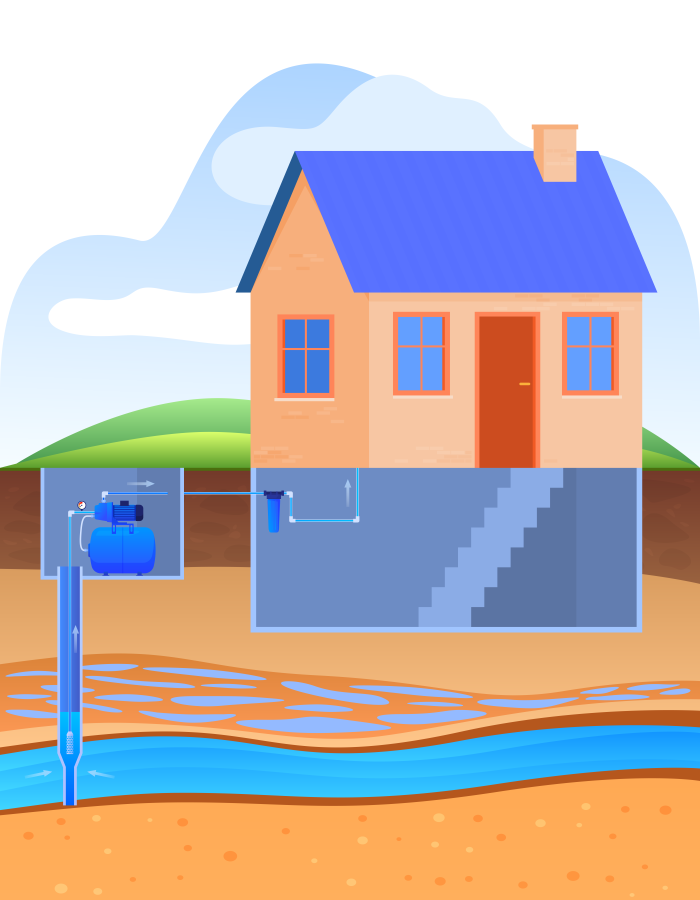Coming Soon
Water Service Pipe
A water line is typically buried 6 inches below the frost line, or 12 inches minimal for protection from freezing or damage. As far as Virginia goes, depth depends on the location within the state. Properties within the Blue Ridge Mountains region can expect depths as deep as 24 inches, where in Virginia Beach the depth may be 18 inches or less. Frost lines vary greatly across the state.
Steel and plastics are the two primary material sources for water service pipe. Plastics have become a favorite over the years, due to several factors. Plastic piping can be installed relatively quick, compared to steel and other materials and it can be run in longer lengths, without the need for fittings as often. Water lines are commonly installed with ¾ – 1 inch pipe for homes. Commercial water service pipe can be larger in size, depending on need.
These water service pipes are under constant pressure. Other than the occasional shut off, these pipes remain under this pressure their entire lifespan. Water can come out of the city main at over 100 psi (pounds per square inch) and will need to be reduced before it enters the building at around 80 psi or less, by means of a pressure reducing valve (PRV). If the water source for the property is supplied by a well water system, the pressure switches are typically set to max out at 65 psi.

Solid installations of water service piping will provide you with decades of use without concern. It’s important that good materials are used during install and valves are placed in proper locations, in order to remain worry free for years. skiwi Plumbing & Trenchless installs new and replacement service lines, complete with correct sizing, pressure testing and inspection. For a new residential water service line, our customers typically invest between $_______ and $_______. Repair prices can vary depending on circumstances; however, prices normally range between $_______ and $_______.
Pricing
- Service
- Price Range
- New/ Replacement
- Coming Soon
- Repair
- Coming Soon
Factors that can affect pricing:
- Landscape/ Hardscape
- Accessibility
- Avoiding other underground utilities
- Special scheduling
Reach out to us.

